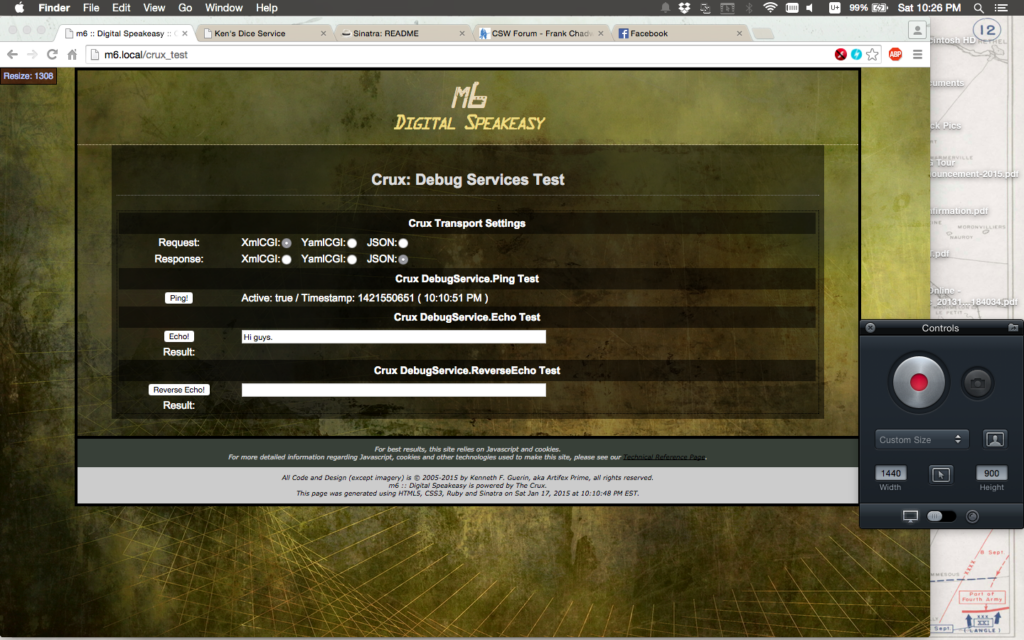flux /fləks/ n. :: the action or process of flowing or flowing out. “the flux of men and women moving back and forth”
Things are in a great state of flux at Mill #6. This post is as much about communication with my friends and others who read this blog as it is about trying to organize my thoughts. I tend to keep myself busy with assorted projects, to a point where my mind is almost never at rest. And when external influences make themselves present, it tends to upset the apple cart. I’m not going to itemize all of the goings-on, but I will discuss the DreamHost saga that I’ve been living for the past month or so, but without the rehash.
Some New Tricks
DreamHost offers a service called DreamCompute. It is unmanaged, in that, as a customer/user of DC, you have full control over your own Virtual Machine and will billed according to the level of power you configure it for. It is based on OpenStack, an open source cloud computing platform. Whereas, DreamHost’s VPS service (Virtual Private Server) ran on one of these cloud instances, it was managed by their tech support staff and various website management tools were provided to allow customers to easily do typical things, such as run WordPress sites or e-commerce solutions or whatnot. It’s a very nice service, but I’m not interested in using run-of-the-mill services. I create services as well as web apps that use those services.
I had been able to use the VPS service as a hosting platform without using the other tools they provide. However, recent changes in how they administrate VPS rendered it incompatible with what I was doing. To be fair to them, the VPS wasn’t designed to support what I was doing. I wasn’t misusing their service, as in I wasn’t doing anything that violated their Terms of Service. I was developing custom software, which is something their VPS wasn’t designed to support.
Hence, DreamCompute. With DreamCompute, I get to create, remove, reboot, configure my own Virtual Machine. What is a Virtual Machine (VM)? A VM, for all intents and purposes, is a full-fledged computer with an OS and software and RAM and disk. It looks like a standalone PC (or server). It runs like a standalone PC. Every piece of software on that system is yours to control as if it was sitting on your desk at home. Except that it isn’t. It is a containerized portion of a much larger and more capable system and fully protected from the other VMs running on that system. Without getting too much into the technical weeds, my single-core, 2GB RAM, 80GB disk VM is probably sitting on a 256-core, 8TB RAM, 512TB disk system which has been partitioned (sliced) into multiple VMs. Single (huge) physical machine, many virtual machines.
With Great Power…
… comes great responsibility. I fired up my first DreamCompute Ubuntu Linux instance (VM) yesterday, then promptly deleted it as I mistakenly only gave it 3GB of disk. Delete, retry. I fired up my second DreamCompute Ubuntu Linux instance yesterday: 1 vCPU, 2GB RAM, 80GB disk with 20GB of disk unused so far. And what I discovered was this: there was no ZSH shell, no mySQL database, no Ruby language, no Apache web server. Nothing. I get to install all of this myself and configure it all myself. This is what “unmanaged” means: full power, full control, full responsibility. There are no nice admin menus to install pre-packaged software, like WordPress. I get to do it all myself: create users, handle user permissions, install software, manage software updates. I am my own IT team with this thing. Great! Yikes!
And I get to do all of this twice: once for Mill #6 and once for Brick Mill Games. The software load-outs will be identical, so there’s that, but still.
Blasts from the Past
In trying to figure out what the featured image for post was going to be, I went into my Barscape archives to find some old images. The Barscape bulletin board forum was my first on-line website administration and configuration experience and it guided me toward web services and application development.

The image above shows the state of Mill #6 and the underlying Crux service framework circa 2015. My original plan for M6 was to replace the Barscape bulletin board with a full-fledged on-line meeting space, like an on-line speakeasy or café. On-line games would be developed and played, fiction studios would be created for collaborative writing and/or sharing. I had in mind an RPG framework to allow for collaborative role-playing games. It was a nice idea, but it was also much bigger than what I could provide alone. Besides, if the Internet has taught me anything, it’s that no matter how nice you make something, some asshole is going to try to piss in the soup. For every functional thing added to a system, you need to write five or more security modules to prevent crime, bullying, privacy invasion advertisement insertion, etc… and there’s always an etc., some new method or hook designed to belittle people, control them or separate them from their money.
Anyway, Crux and M6 live on. Crux is powering the Brick Mill Games TOCS system and M6 has become Mill #6, my own space. The original ideas behind M6 are not lost, just tucked away in a corner of my mind, with lots of other flux-y stuff.
